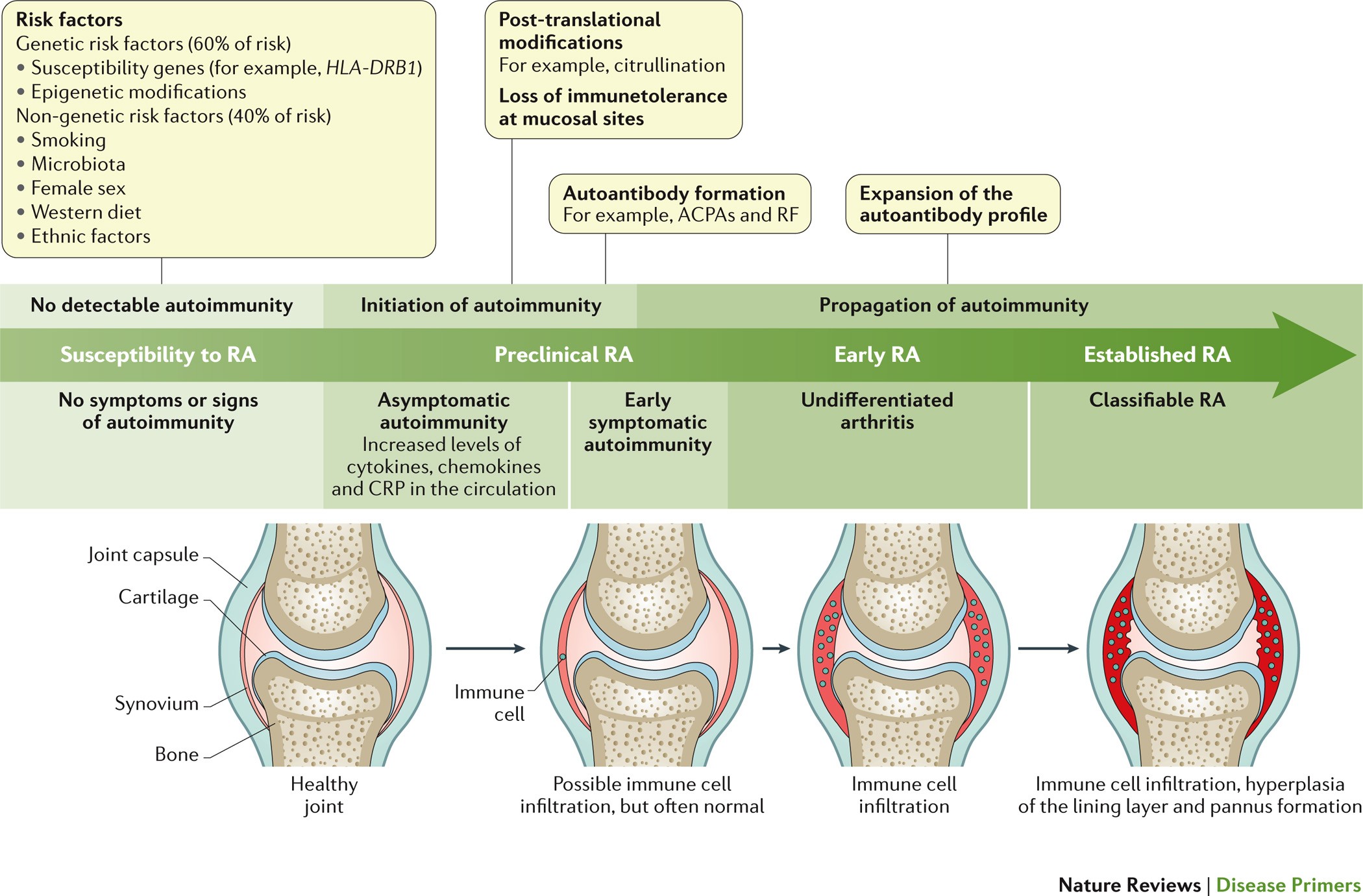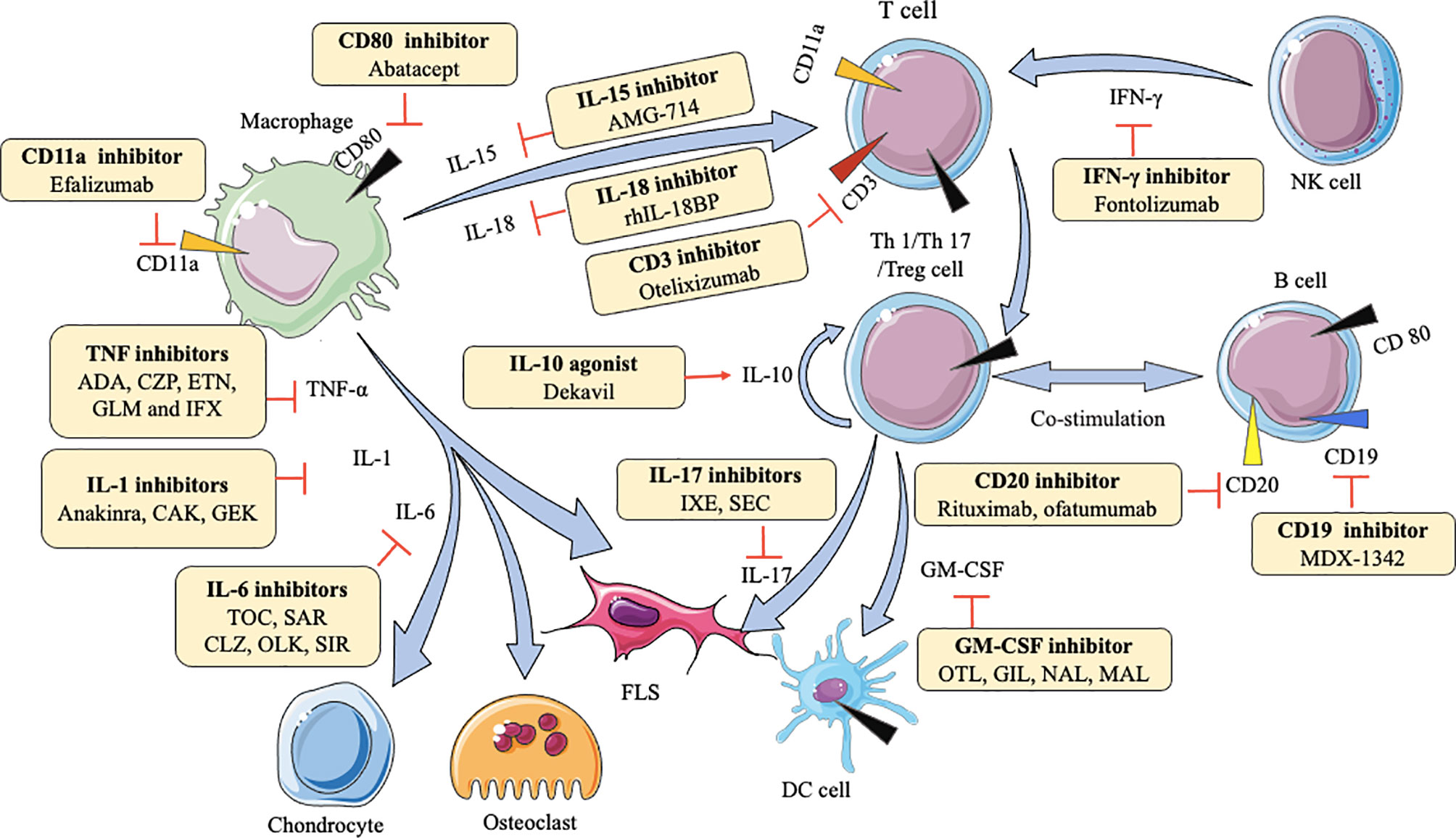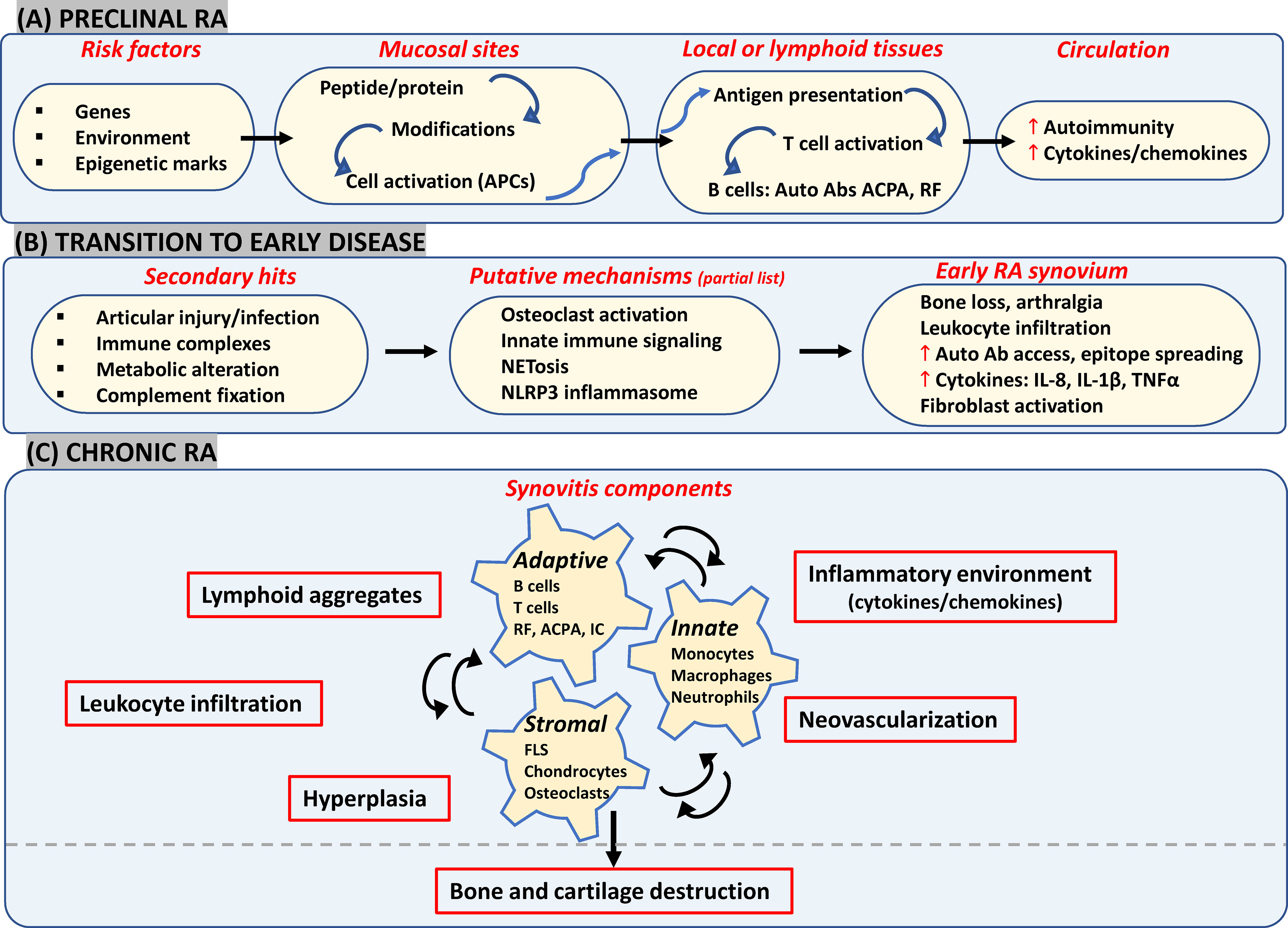Introduction to Rheumatoid Factor and Rheumatoid Arthritis

Rheumatoid arthritis (RA) is a chronic autoimmune disease that primarily affects the joints. It is characterized by inflammation, pain, and swelling in the affected joint or joints. One key factor associated with RA is the presence of Rheumatoid Factor (RF), an autoantibody that targets proteins known as immunoglobulins. These immunoglobulins are normally found in the blood.
RF is produced by the immune system in response to an abnormal immune response. In individuals with RA, RF can be found in their blood at elevated levels. However, it's important to note that not all individuals with RA will test positive for RF, and some individuals without RA may still have RF present in their blood. Therefore, while RF can be used as a diagnostic tool for RA, it is not definitive.
The link between RF and RA lies in the fact that RF plays a role in promoting inflammation and joint damage. When RF binds to immunoglobulins within the joints, it triggers an immune response which leads to an inflammatory cascade. This chronic inflammation results in the destruction of joint tissues over time.
Diagnosing RA involves various tests, including testing for RF. The most common method for detecting RF is through a blood test called the Rheumatoid Factor Test. This test measures the amount of RF present in the blood.
However, it's important to note that a positive result for RF does not always mean one has RA. Other conditions such as infections or other autoimmune diseases can also lead to elevated levels of RF. On the other hand, approximately 30% of patients with early-stage RA may test negative for RF initially.
In conclusion, while Rheumatoid Factor is closely associated with Rheumatoid Arthritis due to its role in promoting inflammation and joint damage, it should be interpreted along with other diagnostic criteria to confirm the presence of the disease. The use of multiple tests and clinical evaluation by a healthcare professional is necessary to accurately diagnose and treat RA.
Understanding the Link Between Rheumatoid Factor and Rheumatoid Arthritis

Rheumatoid arthritis (RA) is a chronic autoimmune disease that primarily affects your joints, causing inflammation, pain, and swelling. One key factor associated with RA is the presence of Rheumatoid Factor (RF), an autoantibody that targets proteins known as immunoglobulins found in the blood.
RF plays a crucial role in promoting inflammation and joint damage in RA. When RF binds to immunoglobulins within your joints, it triggers an immune response that leads to an inflammatory cascade. This chronic inflammation gradually destroys the tissues in your joints over time.
Diagnosing RA involves various tests, including testing for RF. The most common method is through a blood test called the Rheumatoid Factor Test. This test measures the amount of RF present in your blood. However, it's important to understand that a positive result for RF does not always mean you have RA.
While RF is closely associated with RA, it should be interpreted along with other diagnostic criteria to confirm the presence of the disease. This is because not all individuals with RA will test positive for RF, and some individuals without RA may still have RF present in their blood. Approximately 30% of patients with early-stage RA may even test negative for RF initially.
It's also important to note that RF can be present in other conditions, such as infections or other autoimmune diseases. Therefore, a healthcare professional will consider multiple factors when making a diagnosis.
In
summary, while Rheumatoid Factor is closely tied to Rheumatoid
Arthritis due to its role in promoting inflammation and joint damage, it
should be considered alongside other diagnostic criteria. A
comprehensive evaluation by a healthcare professional using multiple
tests will provide an accurate diagnosis and guide appropriate treatment
options for managing this chronic condition.
Diagnostic Testing for Rheumatoid Factor

Diagnostic testing for rheumatoid factor (RF) is an important step in evaluating and diagnosing rheumatoid arthritis (RA). The most common method used is a blood test known as the Rheumatoid Factor Test. This test measures the amount of RF present in your blood.
During the test, a small sample of your blood will be taken and sent to a laboratory for analysis. The lab technicians will look for the presence of RF antibodies in your blood.
It's important to note that having a positive result for RF does not necessarily mean you have RA. RF can also be present in other conditions, such as infections or other autoimmune diseases. Therefore, it's crucial to consider multiple factors when interpreting the results.
Additionally, not all individuals with RA will test positive for RF, especially in the early stages of the disease. It is estimated that around 30% of patients with early-stage RA may initially test negative for RF. Consequently, relying solely on an RF test may lead to inaccurate diagnoses.
To confirm a diagnosis of RA, healthcare professionals rely on a combination of clinical symptoms, physical examinations, imaging tests like X-rays or ultrasounds, and other blood tests such as anti-cyclic citrullinated peptide (anti-CCP) antibody test.
It's essential to consult with a healthcare professional experienced in managing bone and joint disorders to accurately interpret the results of your diagnostic tests. They will consider your medical history, symptoms, physical examination findings, and additional tests to arrive at a comprehensive diagnosis.
If you do receive a positive result for RF along with other supporting evidence for RA, it indicates an increased likelihood of having the disease. A thorough evaluation by a healthcare professional is necessary to guide appropriate treatment options and management strategies tailored specifically to your needs.
In summary, diagnostic testing for rheumatoid factor plays an important role in evaluating RA; however, it should always be interpreted alongside other diagnostic criteria to ensure an accurate diagnosis. A comprehensive evaluation by a healthcare professional will help determine the presence of RA and guide appropriate management and treatment options for this chronic condition.
Interpreting Rheumatoid Factor Test Results

Interpreting the results of a Rheumatoid Factor (RF) test is crucial in evaluating and diagnosing rheumatoid arthritis (RA). When you receive your test results, there are a few key factors to consider.
First, it's important to understand that a positive result for RF does not definitively mean you have RA. RF can also be present in other conditions, such as infections or other autoimmune diseases. Therefore, it's essential to take into account your overall medical history, symptoms, physical examination findings, and any additional tests that have been done.
Additionally, not all individuals with RA will test positive for RF, especially in the early stages of the disease. In fact, approximately 30% of patients with early-stage RA may initially test negative for RF. This emphasizes the importance of considering multiple diagnostic criteria and consulting with a healthcare professional experienced in managing bone and joint disorders.
To arrive at an accurate diagnosis, your healthcare professional will evaluate all available information comprehensively. They will interpret your RF test results alongside other clinical symptoms, imaging tests like X-rays or ultrasounds, and possibly additional blood tests such as the anti-cyclic citrullinated peptide (anti-CCP) antibody test.
If your RF test comes back positive along with other supporting evidence for RA, it indicates an increased likelihood of having the disease. However, a thorough evaluation by a healthcare professional is necessary to confirm the diagnosis and guide appropriate treatment options and management strategies tailored specifically to your needs.
Remember that interpreting RF test results should be done in conjunction with other diagnostic criteria. Your healthcare professional will use their expertise to determine the presence of RA based on a comprehensive evaluation. Rest assured that with an accurate diagnosis and proper management plan, effective treatment options are available to help alleviate symptoms and improve quality of life for individuals living with rheumatoid arthritis.
Other Factors Influencing Rheumatoid Factor Levels

When interpreting Rheumatoid Factor (RF) test results, it's important to consider that RF levels can be influenced by a variety of factors. While a positive RF test is often associated with rheumatoid arthritis (RA), there are some other factors that can cause elevated RF levels.
Infections: Certain infections, such as hepatitis C, HIV, and bacterial endocarditis, can trigger an immune response in the body and lead to increased production of RF. These infections can cause temporary elevations in RF levels even in individuals without RA.
Aging: As we age, our bodies may naturally produce higher levels of RF. This means that older individuals may have slightly elevated RF levels even if they don't have RA or any other autoimmune condition. Therefore, when evaluating RF test results in elderly patients, healthcare professionals need to consider their age-related changes.
Other Autoimmune Diseases: RF can also be present in other autoimmune diseases like systemic lupus erythematosus (SLE) and Sjogren's syndrome. If you have one of these conditions, it's possible to have a positive RF test without having RA.
Smoking: Smoking cigarettes has been found to increase the risk of developing RA and can also increase RF levels in the blood. It is believed that the chemicals in cigarette smoke trigger an immune response that leads to inflammation and autoimmunity.
Medications: Some medications, such as certain biologic therapies used for treating RA or hepatitis C, can affect RF levels. These medications may either lower or normalize RF levels over time.
It's crucial to remember that while these factors can influence RF levels, they should not be considered definitive evidence of RA on their own. A comprehensive evaluation by a healthcare professional experienced in managing bone and joint disorders is necessary to accurately interpret test results and make an appropriate diagnosis.
Understanding the various factors that can influence RF levels allows healthcare professionals to make more informed decisions when assessing patients for RA. By considering these factors alongside other clinical findings, an accurate diagnosis can be made, leading to effective treatment options and improved management of rheumatoid arthritis.
Management and Treatment Options for Rheumatoid Arthritis

When it comes to managing and treating rheumatoid arthritis (RA), there are various options available. The goal is to reduce inflammation, relieve pain, and prevent joint damage to improve your quality of life.
Medications play a crucial role in RA management. Nonsteroidal anti-inflammatory drugs (NSAIDs) such as ibuprofen can help reduce pain and swelling. Disease-modifying antirheumatic drugs (DMARDs) are often prescribed to slow down the progression of RA and prevent joint damage. These may include methotrexate, sulfasalazine, or leflunomide. Biologic DMARDs like adalimumab or etanercept target specific components of the immune system to help control inflammation.
In addition to medications, physical therapy is an integral part of managing RA. A physical therapist can develop an exercise program tailored to your needs, helping improve flexibility, strength, and range of motion in affected joints.
Another important aspect of RA management is lifestyle modifications. Maintaining a healthy weight through proper diet and regular exercise can alleviate stress on your joints. Applying heat or cold packs to affected areas can provide temporary relief from pain and inflammation. Assistive devices like splints or braces can support affected joints and ease movement.
It's also essential to prioritize self-care for overall well-being. Getting enough rest and sleep allows your body time to heal and reduces fatigue associated with RA. Stress management techniques such as meditation or deep breathing exercises can help reduce stress levels, which in turn may minimize symptom flare-ups.
Regular follow-up with your healthcare provider is vital in monitoring your condition and adjusting treatment plans accordingly. They may recommend additional therapies such as corticosteroid injections into affected joints for targeted relief.
Remember that each person's experience with RA is unique, so finding the right combination of management strategies may take time. Working closely with a healthcare team experienced in managing bone and joint disorders will ensure that you receive the most effective treatment options available.
By actively participating in your treatment plan and making necessary lifestyle adjustments, you can better manage your RA symptoms and maintain a good quality of life.
Conclusion: The Ongoing Research and Future Prospects

In conclusion, the role of rheumatoid factor (RF) in rheumatoid arthritis (RA) is a complex and ongoing area of research. While RF is an important diagnostic marker for RA, its presence does not guarantee the development of the disease. Researchers are continuing to explore the relationship between RF and RA to gain a deeper understanding of its mechanisms and potential therapeutic implications.
Current studies are focused on identifying specific antibodies and molecules present in RF that may contribute to the development and progression of RA. This knowledge may eventually lead to targeted therapies that can effectively suppress the inflammatory response associated with RA.
Furthermore, advancements in technology have allowed for more precise testing methods, such as testing for anti-citrullinated protein antibodies (ACPAs), which have shown promise in predicting disease severity and progression in individuals at risk of developing RA. These developments may help improve early detection and intervention strategies, leading to better outcomes for patients.
Additionally, researchers are investigating novel treatment options that specifically target RF or its downstream effects. This includes exploring immunomodulatory therapies and biologic medications that can selectively inhibit RF production or block its interaction with immune cells.
Looking ahead, the future prospects for managing RA through targeting RF are promising. The ongoing research aims to unravel the complexities of this autoimmune disorder, providing clinicians with more accurate diagnostic tools and effective treatment options tailored to each individual's needs. This will ultimately improve patient outcomes, enhance their quality of life, and potentially prevent long-term joint damage.
In conclusion, while there is still much to learn about the role of RF in RA, researchers are making significant strides towards better understanding this link. As continued advances are made in diagnostic techniques and treatment modalities, individuals living with RA can look forward to improved management strategies that address their unique needs.

.jpg)